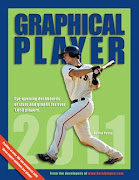I think this is a great concept for a book given that managers tend to be one of the most overlooked elements of a team. Despite all the statistical advances in evaluating player and team performance, the manager’s influence has always been difficult to measure. What role do a manager’s actions actually play in deciding a team’s win-loss record? Jaffe’s book takes a fresh approach to answering this question and lays a solid foundation for future research on the impact of managerial decisions.
The first part of the book explains the metrics upon which its conclusions are based and provides results illustrating who the best, worst, and most extreme managers in history are. Jaffe utilizes the Birnbaum Database (based on expected win-loss records and run differential algorithms) and Tendencies Database (based on how teams rank in certain categories, like bunts), in addition to other supporting stats, to create the core metrics for comparing managers in relation to their team’s performance. The databases also provide a baseline with which to compare managers against each other, distilling their abilities (or lack thereof) into tangible results.
The second half of the book contains entries on 89 managers spanning 132 years of baseball history, including 77 managers who served at least 10 seasons as a team’s primary manager and 12 of the most significant who fell short of this criterion. Additional background on the book is available here, for those who are curious.
I had access to the entries for 13 former Cleveland managers, from Patsy Tebeau (1892-98) to Mike Hargrove (1992-99), which gave me a good sample to consider.
My favorite part of the excerpts was how seamlessly Jaffe integrated the history in with the analysis for each manager. Historical context can play an important role in understanding a manager’s tendencies (the use of starting pitchers now and in the past is a prime example), while also adding depth to an entry. Famous events, characters, and trivia from baseball’s history populate each entry, making the book as much a history lesson as an analytical tool.
Obviously, some managers received more detailed entries than others, but I never felt like any of them were being shorted (length was appropriate to influence). It also didn’t show any bias towards the big name managers; for every Lou Boudreau, you’ll find someone like Steve O’Neill who is described in just as much detail and is just as fascinating.
Each manager’s Team Characteristics write-up is prefaced with a summary of their career record/timeline and database results. The data is depicted on the basis of runs scored/prevented and was easy enough to understand. Basically, if you can read an adjusted stat like OPS+, you won’t have any trouble understanding the stats presented in the book. By comparing the Team Characteristics section to a manager’s effectiveness scores from the Birnbaum database, the reader can immediately make a connection as to whether or not a manager’s methods proved effective or not.
Based on the brief explanation I read, Jaffe seems to have a strong methodology in place for generating and evaluating the statistics he uses from all angles, going so far as to highlight possible errors or shortcomings that may be influencing the data and offering an appropriate explanation or caveat to accompany the data.
Occasionally, an individual manager’s entry will highlight a particular trend or unique record, weaving in other managers who share the same thread. I particularly enjoyed these nuggets of analysis, since they actually backed up the previously stated tendencies with results and could connect historical trends experienced by other managers. Below is a sample of analysis for Al Lopez (1951-56) pertaining to his starting rotation:
Lopez, unlike other AL skippers, noted the weather and temperature when deciding how much he should lean on his starting pitchers. The below chart notes what percentage of starts resulted in completion for the White Sox from 1957-65 (when Lopez managed them) in comparison to the rest of the league:
| Month | CWS | Other AL |
| April | 25.7% | 26.2% |
| May | 25.3% | 26.4% |
| June | 28.0% | 25.6% |
| July | 28.4% | 26.1% |
| Aug. | 34.7% | 27.1% |
| S/O | 24.6% | 27.7% |
This list reveals that the rest of the league’s pitchers started games on a regular basis throughout the season, but Lopez’s White Sox were less likely to finish games in the colder months. This looks like sensible player management on Lopez’s part. The colder the weather, the harder it is for the muscles to warm up (this is especially true after sitting down for a half-inning). An arm that was not fully warmed up risked a greater chance of injury or at least ineffectiveness. By maintaining an awareness of when to push or ease up on his players, Lopez’s squads could thrive instead of wilt as the year went on.
I’ve become so accustomed to the way the game is managed today, it’s fun to look back at how the game used to be. I’d also never even heard of most of the old-time mangers and wouldn’t have known how influential some of them were on the franchise from just glancing at the numbers on their Baseball Reference page. Jaffe’s book helps define part of a franchise’s history that fans wouldn’t otherwise be exposed to.
Even better, is reading about managers that you’ve actually seen in action and are able to pair your own opinion and experiences with. Reading about popular contemporary managers in this context puts them in a whole other light as far as whether they actually deserve the reputation and accolades they’ve received in their careers. So for all the fans who are tired of hearing about the genius of Tony LaRussa or how overrated Joe Torre is, now you have a tool at your disposal that can help separate fact from fiction.
I would recommend this book to any baseball fan with an interest in history or the latest statistical analysis (honestly, it could stand alone in either category). "Evaluating Baseball's Managers" is available for purchase here.








